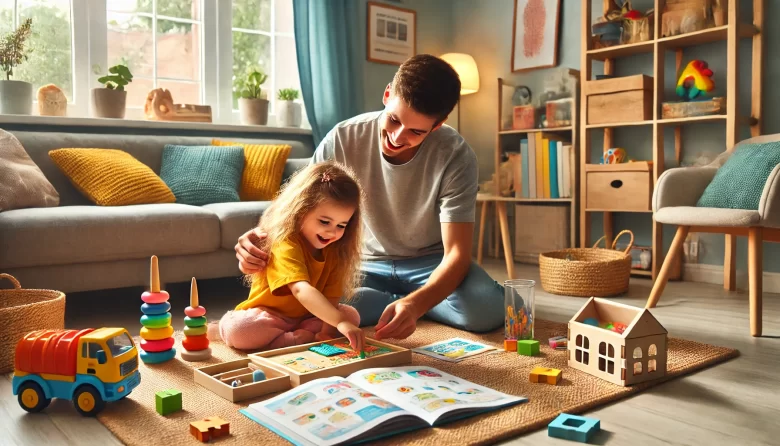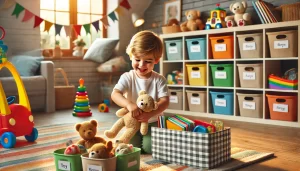Balancing fun and learning in a child’s daily routine is essential for healthy development. Children naturally learn through play, but parents often struggle to create an environment that fosters both enjoyment and education. Striking this balance ensures that kids stay engaged, motivated, and curious without feeling overwhelmed by structured learning.
In this article, we will explore practical ways to integrate learning into play, discuss age-appropriate activities, and provide expert-backed tips for making everyday moments educational and fun.
Why Is Balancing Fun and Learning Important?
The traditional approach to education often separates learning from play, leading children to view learning as a task rather than an enjoyable experience. However, research shows that children absorb knowledge more effectively when they are actively engaged in enjoyable activities.
Key Benefits of a Balanced Approach:
✅ Encourages a lifelong love for learning
✅ Reduces stress and frustration associated with rigid learning structures
✅ Enhances memory retention through hands-on experiences
✅ Strengthens emotional and social development
✅ Fosters curiosity and problem-solving skills
By blending fun and education, parents can create a nurturing environment where children develop naturally without the pressure of forced learning.
How to Integrate Learning into Play
Gamify Learning Activities
Turning educational tasks into games can make learning feel like an adventure.
Examples:
- Math: Use building blocks or toys to teach counting and basic arithmetic.
- Reading: Turn bedtime stories into interactive storytelling sessions with character voices.
- Science: Create simple experiments like making a baking soda volcano.
🎯 Pro Tip: Reward progress with stickers or small prizes to keep motivation high.
Follow Your Child’s Interests
Children learn best when they are interested in the topic. Observe what excites your child and incorporate educational elements into that activity.
Examples:
- A child who loves dinosaurs can learn about history, geography, and fossils.
- A budding artist can explore colors, patterns, and shapes while painting.
- A music-loving child can develop rhythm, coordination, and memory through songs.
🎯 Pro Tip: Introduce new topics by linking them to your child’s existing interests.
Incorporate Learning into Daily Routines
Everyday activities can provide valuable learning experiences.
Examples:
- Cooking: Measuring ingredients introduces math concepts.
- Grocery Shopping: Identifying fruits, vegetables, and prices helps with vocabulary and numeracy.
- Cleaning Up: Sorting toys by color, shape, or size teaches categorization skills.
🎯 Pro Tip: Narrate tasks and ask questions to encourage critical thinking.
Use Technology Wisely
Educational apps, videos, and games can be excellent tools when used in moderation.
Examples of High-Quality Apps:
📱 ABCmouse (literacy and math skills)
📱 Duolingo Kids (language learning)
📱 PBS Kids Games (various subjects through interactive play)
🎯 Pro Tip: Set screen time limits and encourage co-play with parents to enhance learning.
Encourage Outdoor Learning
Nature provides a rich learning environment that stimulates curiosity.
Outdoor Learning Ideas:
🌳 Identify different plants, birds, or insects.
🚶♂️ Take a “science walk” and collect leaves, stones, or flowers.
🌞 Play physical games like hopscotch to improve motor skills and counting.
🎯 Pro Tip: Outdoor play enhances creativity and helps children develop problem-solving skills naturally.
Age-Appropriate Activities for a Fun Learning Experience
Each developmental stage requires different learning approaches. Here are some age-based ideas:
👶 Toddlers (1-3 Years Old)
- Stacking and sorting toys for motor skill development
- Simple sing-along songs to boost language skills
- Sensory play with sand, water, or playdough
🧒 Preschoolers (3-5 Years Old)
- Role-playing games (pretend grocery shopping, doctor, or firefighter)
- Easy puzzles to develop problem-solving skills
- Storytelling and acting out scenes from books
👦 School-Age Children (5-7 Years Old)
- Basic science experiments (growing plants, melting ice with salt)
- Cooking simple recipes to practice measurements
- Writing letters or drawing stories to enhance literacy
🎯 Pro Tip: Adapt activities based on your child’s skill level and interests.
The Power of Positive Reinforcement
Encouraging a child’s learning efforts with praise and rewards helps maintain motivation. However, it’s important to focus on effort rather than results.
Ways to Reinforce Positive Learning:
✅ Celebrate small achievements (“Great job solving that puzzle!”)
✅ Create a reward chart with fun incentives
✅ Use encouraging language rather than criticism
🎯 Pro Tip: Avoid comparing siblings or peers—every child learns at their own pace!
Common Challenges and How to Overcome Them
“My child loses interest quickly.”
✔️ Solution: Keep activities short and engaging. Use hands-on learning methods rather than passive instruction.
“My child prefers playing over learning.”
✔️ Solution: Blend learning into play by using games, storytelling, and exploration rather than worksheets.
“I don’t have time to create structured learning activities.”
✔️ Solution: Incorporate learning into everyday tasks like cooking, cleaning, and driving.
🎯 Pro Tip: Keep a list of quick, fun learning activities handy for busy days.
Final Thoughts
Balancing fun and learning doesn’t require complex lesson plans or expensive materials. The key is to integrate education naturally into your child’s play and daily routine. By making learning enjoyable, you are fostering a love for knowledge that will benefit them for a lifetime.
The best education happens when children don’t even realize they are learning—because they are having too much fun!




